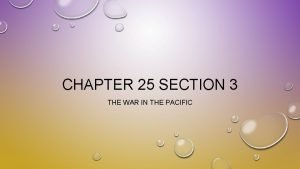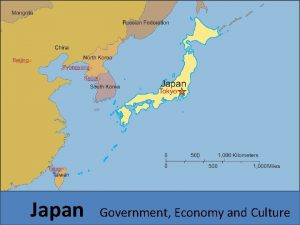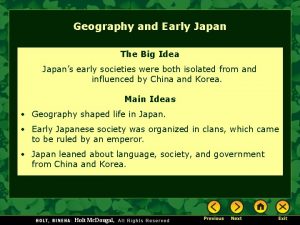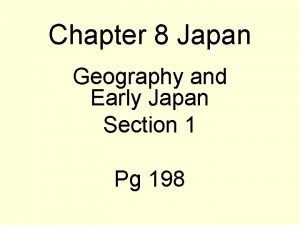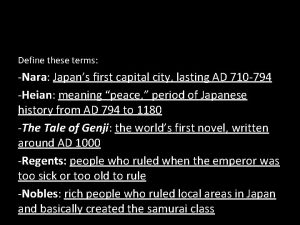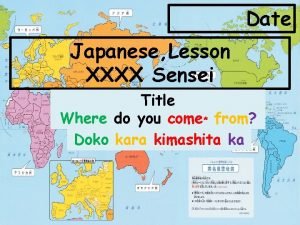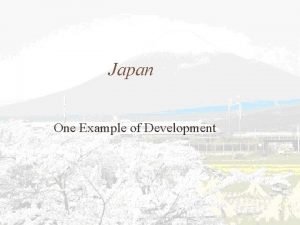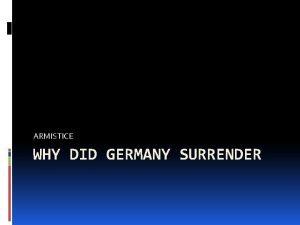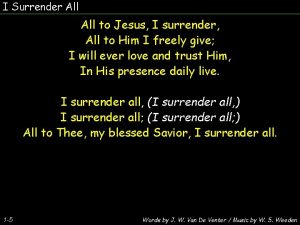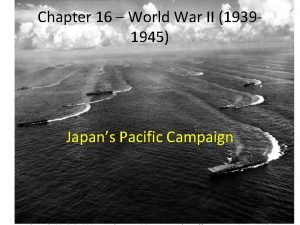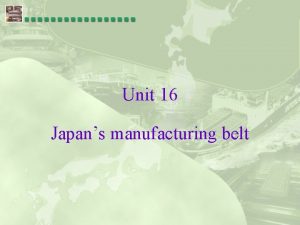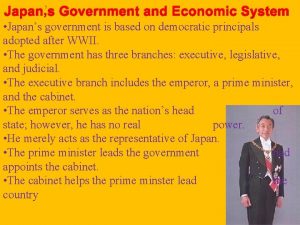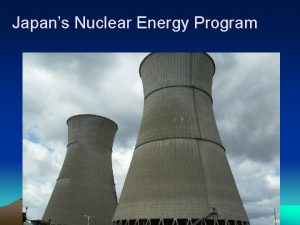Section 5 War in the Pacific Japans surrender











- Slides: 11


Section 5: War in the Pacific Japan’s surrender ends World War II

Key terms: island hopping, kamikaze Essential Questions How did the U. S. plan to gain control of the Pacific region? What role did the atomic bomb play in ending World War II?

The Pacific Front On Dec. 7, 1941, the same day Japan attacked Pearl Harbor, Japanese bombers struck American airfields in the Philippines and key American bases on the islands of Wake and Guam. Japanese troops landed in the Philippines in mid. December and quickly took the capital city of Manila. Commanded by American General Douglas Mac. Arthur troops were forced to retreat to the Bataan Peninsula. Japanese forces then invaded Thailand, Malaya and British colony of Hong Kong.

Bataan Death March After months of fighting Allied troops defending Bataan surrendered on April 9, 1942. The Japanese forced their Bataan prisoners to march to a prison camp more than 60 miles away. Of the 76, 000 prisoners that started out only 54, 00 survived the Bataan Death March.

Island Hopping After Japan’s string of quick victories, American morale was low. In May 1942 The Battle of the Coral Sea was a strategic victory because it halted the Japanese advance on Australia. Even greater victory was the Battle of Midway in June 1942, Japan’s first major defeat. American forces under Gen. Mac. Arthur and Admiral Chester Nimitz conducted an island hopping campaign using islands they won as stepping stones to Japan. American forces recaptured Guam, destroyed Japanese fleet at the Battle of Leyte Gulf. In March 1945 Iwo Jima and Okinawa were seized. Japanese kamikaze pilots crashed their planes into Allied ships.


Defeat of Japanese Although Japanese faced certain defeat they continued to fight. Pres. Roosevelt created a top-secret operation, the Manhattan Project that developed the atomic bomb. The Allies issued the Potsdam Declaration, a warning sent to Japan to surrender or face “prompt & utter destruction”. Japan ignored Potsdam declaration. On Aug. 6, 1945 the Enola Gay dropped atomic bomb on Hiroshima, Japan killing 70, 000. On Aug. 9, 1945 a second bomb dropped on Nagasaki killing 40, 000 instantly.



The War ends After the bombings, the Japanese government agreed to surrender. August 15, 1945 was proclaimed V-J Day for “Victory over Japan” Allied authorities put the top Nazi and Japanese leaders on trial. The trials were held in Nuremburg and Tokyo. WWII was the most destructive conflict in history, more than 40 million died during the war; more than half were civilians killed by bombing, starvation, disease, torture and murder. Those who survived faced the huge task of trying to rebuild their lives and their countries. Many colonies began to seek independence in the postwar years.
